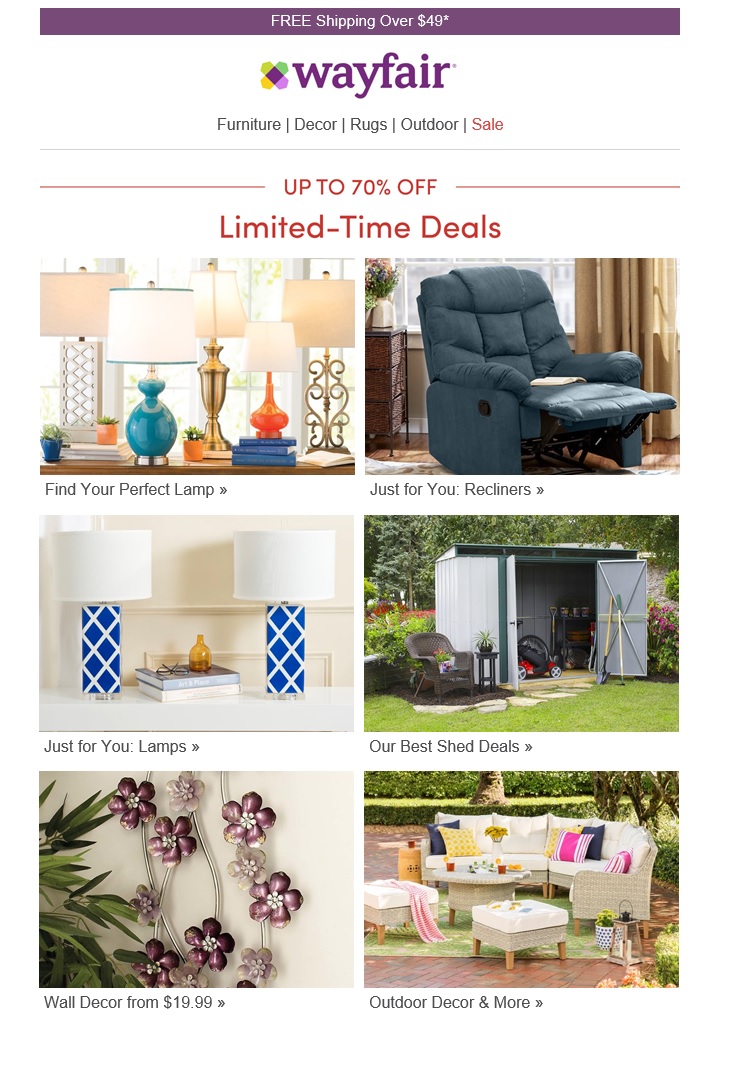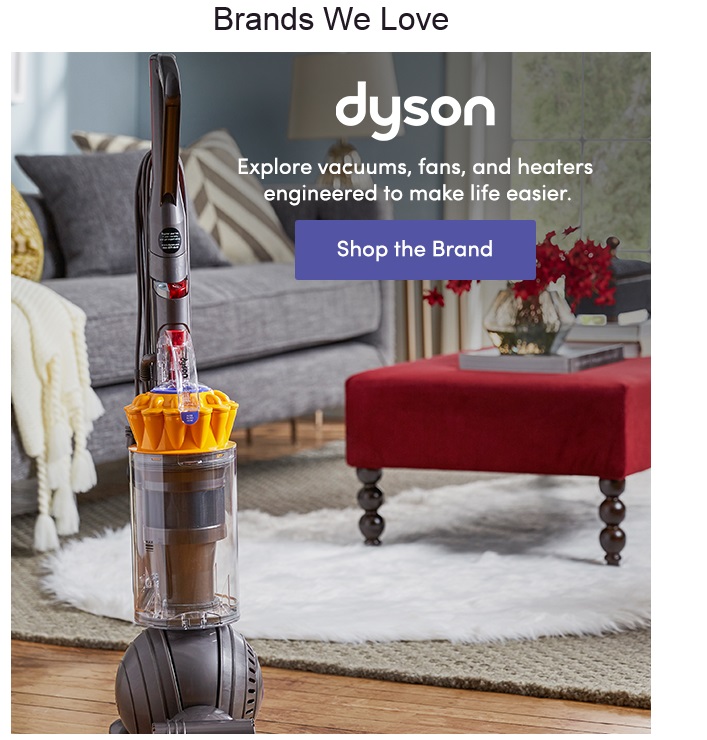Consumers are inundated with marketing emails. The challenge for ecommerce merchants is to craft subject lines and body content that are relevant to recipients, who typically scan their inboxes to identify messages that appeal.
In this post, I’ll review five tips to make a good marketing email a great one.
5 Tips for a Great Email
1. Subject line. Recently, my cat broke a bedside lamp. For a replacement, rather than visiting a HomeGoods or Walmart store I went to Wayfair.com. After narrowing down the selection, I left the site without placing an order or putting anything in my cart.
The next day I received in my inbox an email from Wayfair. It caught my attention. It read, simply:
We found these lamps for you. 😊
The Wayfair subject line was one of the most effective I’ve seen. It immediately addressed my need, and it also helped me. Perhaps the email identified lamps that I wasn’t considering. Adding the smiley emoji provided a personal touch — as if my friends or relatives were sending this email.
All of these elements combined prompted me to open the email. It stood out in the clutter of my inbox.
The challenge with creating personalized subject lines based on products or categories is that they cannot easily be dynamically inserted to make sense. Consider, for example:
We know you’ll love these [products]. 😊
If the product were “wall art” versus “chairs,” the subject line would not work grammatically. Thus it is important to preview all combinations of dynamic insertions.
2. Product selection. When I opened the Wayfair email, I expected to find a good selection of lamps. But that’s not what happened. The body of the email did offer a few links to lamps. But it contained other product categories that did not interest me.
The right side featured recliners and sheds. The left side included a few links to lamps. The email, instead, should have displayed all the lamp selections at the top.

The right side of the Wayfair email featured recliners and sheds, which were not relevant to the author’s need.
To be sure, it’s a fine line. Consumers that shop for specific items — e.g., lamps — could be interested in other products. So offering options in the email is a good idea. However, in this case they should have been placed less prominently.
A good way to tell if your emails are effective in merchandising is to look at your click-to-open rate. What percentage of your recipients that open your emails also click on them? If this rate is slipping or lower than your benchmarks, review the content of the email — the products and the merchandising. They may be not relevant to the recipients.
3. Timing. Timing is important for email conversions. That is why abandoned cart and other triggered emails work so well. They address a need at an optimum time.
The Wayfair email arrived within 12 hours of my initial shopping visit. Importantly, Wayfair knew I had not completed an order. Consumers often experience the opposite: An marketing email arrives after a purchase. Make sure your system checks for orders before sending automated browse, search, or abandoned-cart emails.
4. Calls to action. A few words in an email call to action can greatly impact recipients’ behavior. For a B2B client a few years ago, for example, I tested two calls to action: “Download Now” and “Receive Your Free Report.” “Download Now” had a significantly lower click rate, which equated to a much lower conversion rate.
Test your calls to action. They should reflect the recipient’s state of mind. For the Wayfair lamp example, “Find Your Perfect Lamp >” and “Just for You: Lamps >” are equally appropriate and effective.
5. Reduce distraction. The quickest way to a conversion is to reduce distractions. If consumers have shopped on your site, the goal of a good email should be to entice them to return and make a purchase. For these shoppers, avoid links that lead them away from a shopping cart, such as non-relevant videos or social media posts.
The Wayfair email, for example, included at the bottom a promotion for Dyson products. It’s unrelated to lamps, which is what I was interested in.

Including Dyson products at the bottom of the Wayfair email is risky. It’s unrelated to lamps and could distract from an immediate purchase.





